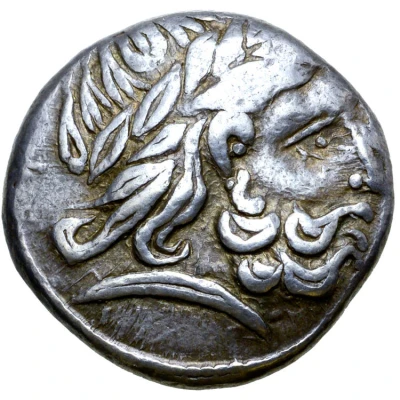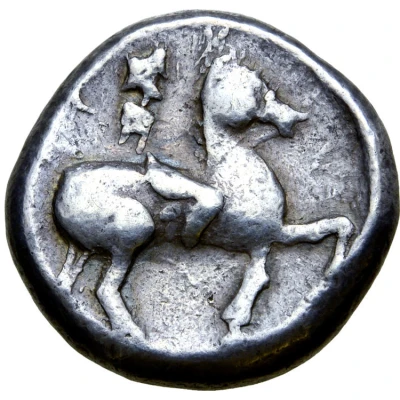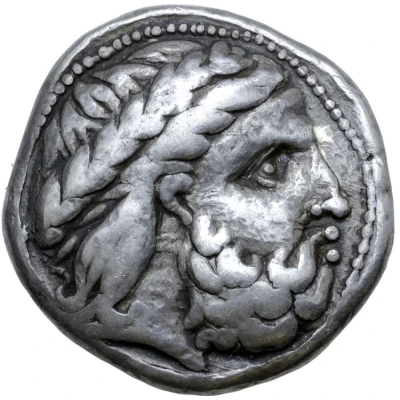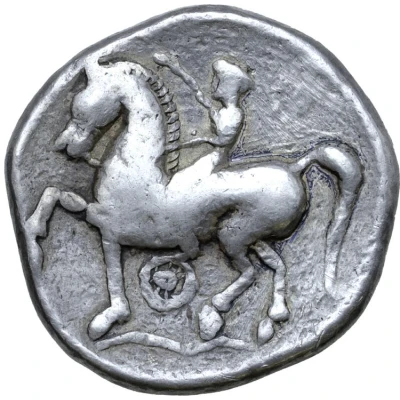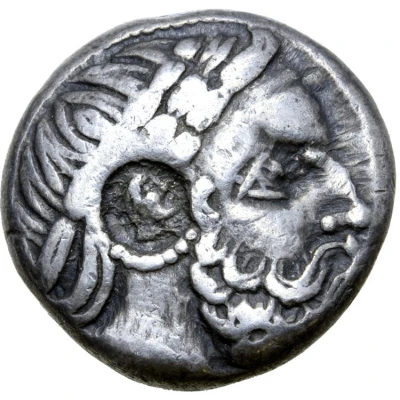
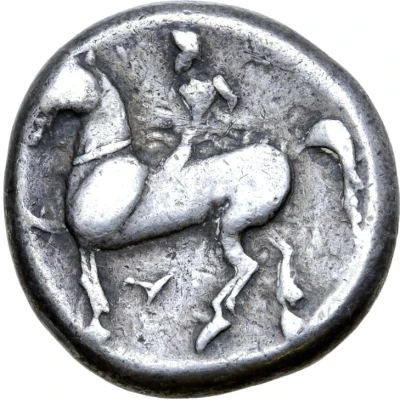

© Roma Numismatics Limited
Tetradrachm Clear Countermark Type 300 BC - 201 BC
| Silver | 13.57 g | 22 mm |
| Issuer | Uncertain Eastern European Celts (Uncertain Central and Eastern European Celts) |
|---|---|
| Type | Standard circulation coin |
| Years | 300 BC - 201 BC |
| Value | Tetradrachm (4) |
| Currency | Drachm |
| Composition | Silver |
| Weight | 13.57 g |
| Diameter | 22 mm |
| Shape | Round (irregular) |
| Technique | Hammered, Countermarked |
| Orientation | Variable alignment ↺ |
| Demonetized | Yes |
| Updated | 2024-10-09 |
| Numista | N#190428 |
|---|---|
| Rarity index | 100% |
Reverse
Rider on horseback to left, holding palm branch; T form below horse.
Comment
Göbl, OTA pl. 9, 82/1.History of the piece in the main image (13.57g, 22mm, 11h.):
• Ex-Hermann Lanz Collection; published in Kostial #398;
• Exhibited by the Staatlichen Münzsammlung München at the 1997 International Numismatic Congress in Berlin; at the Berliner Bank also in 1997; also exhibited at the Luitpoldblock Palmengarten, Munich in 2003 (exhibition #75[obverse]).
Recorded Auctions:
• Roma Numismatics Ltd, Auction XVIII, 29 September 2019, lot 105. Sold for 2'200 GBP in VF grade.
Interesting fact
One interesting fact about this coin is that it features a unique countermark, which is a small stamp or symbol that was added to the coin after it was minted. The countermark on this coin is a crescent moon and star, which was likely added by a merchant or trader to indicate that the coin had been authenticated or certified in some way. This practice of countermarking coins was common in ancient times, and it helped to ensure the authenticity and value of the coins in trade.
